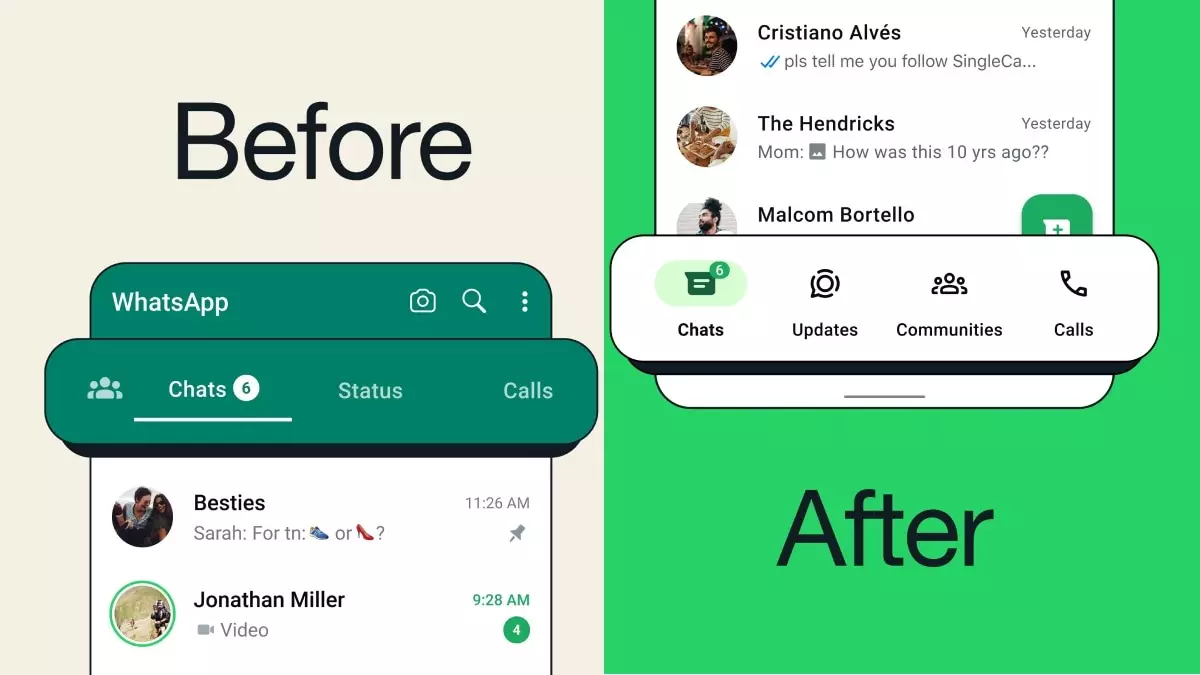WhatsApp, a messaging service owned by Meta, has recently made a significant change to its user interface for Android smartphones. The update involves moving the four navigation tabs that were previously located at the top of the screen to the bottom. This revised visual interface, which has been in testing on the beta version of the app for some time, is now being made available to all users. The purpose of this design update is to enhance user experience by making it easier for individuals to navigate between different tabs while using the app with just one hand.
With the navigation tabs now situated at the bottom of the screen, WhatsApp users can effortlessly switch between tabs without having to stretch their fingers or adjust their grip on the phone. This convenience is particularly beneficial for individuals who find themselves using their smartphones one-handed. However, it is important to note that if users need to perform a search within the app, they will still need to reach for the top of the screen.
While the update to move the navigation tabs to the bottom of the screen is specific to Android devices, it is worth mentioning that WhatsApp for iOS already displays tabs at the bottom, including a fifth tab for accessing the settings menu. This consistency in interface design across different platforms can help create a more seamless user experience for individuals who use WhatsApp on multiple devices.
Although the rollout of the new bottom navigation tabs is a notable change, WhatsApp is actively working on implementing additional features to enhance its messaging service. One such feature in development is the ability to facilitate international payments through the app using the NPCI’s Unified Payments Interface (UPI) in India. This potential new feature could further expand the utility of WhatsApp beyond just messaging.
In addition to payment integration, WhatsApp is also exploring the integration of artificial intelligence (AI) into its platform. For instance, the messaging service is working on a feature that will allow users to generate stickers by providing text prompts, leveraging AI technology. Furthermore, WhatsApp has been experimenting with AI-powered image editing capabilities and a feature that enables users to ask questions to Meta’s AI through the search bar in the app. These enhancements, once implemented, could redefine the way users interact with WhatsApp and personalize their messaging experience.
Overall, the recent update to the user interface on WhatsApp for Android represents a step towards improving accessibility and usability for millions of users worldwide. As the messaging service continues to innovate and develop new features, it will be interesting to see how these changes shape the future of communication through digital platforms.


Leave a Reply